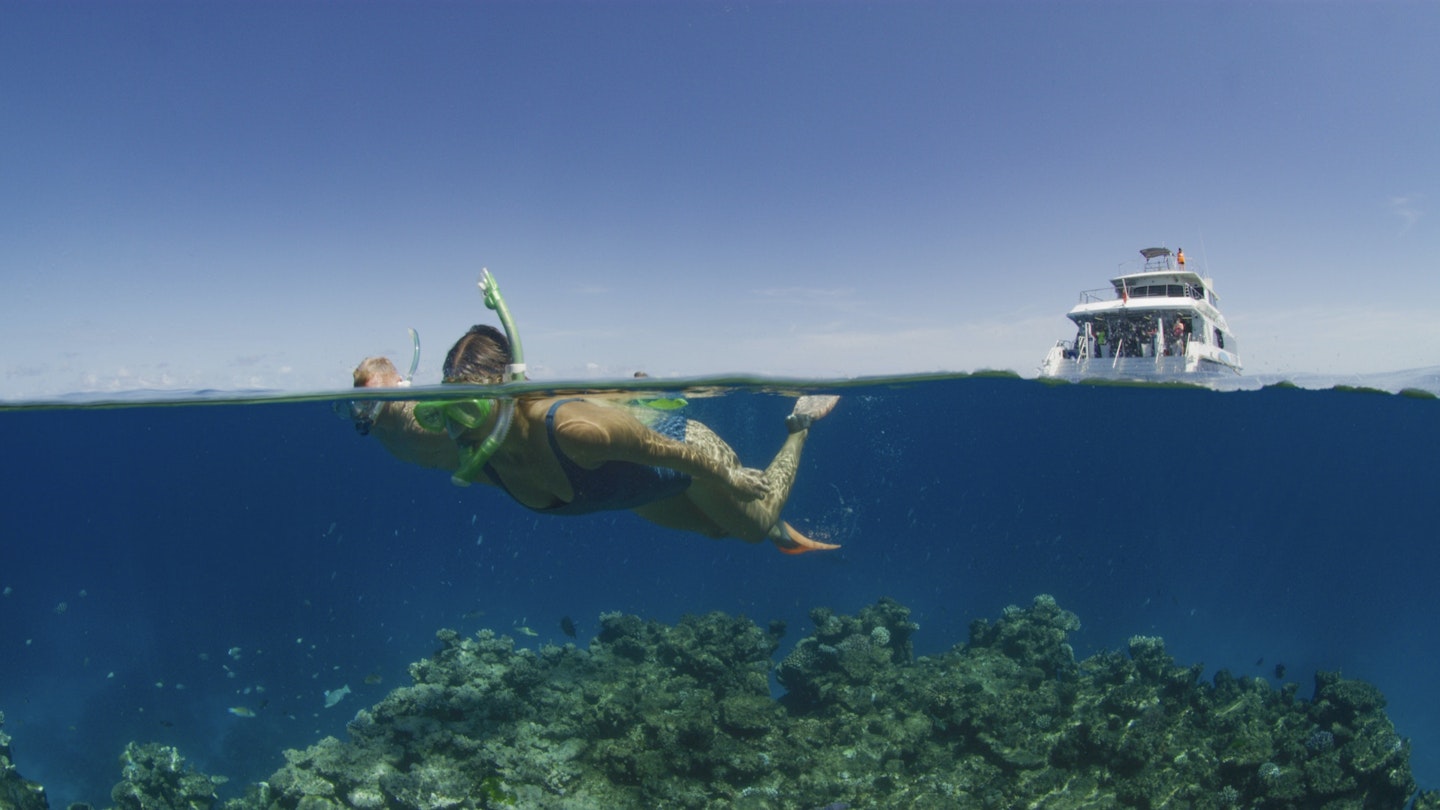The Ultimate Guide to the Great Barrier Reef: Exploring the Wonders of Nature with iBestTravel
Australia’s Great Barrier Reef is without a doubt one of the most bio-diverse wonders on the planet. Spanning more than 1,400 miles from Bundaberg to Cape York, it covers an area equivalent to 70 million football fields and stands as the largest natural feature on Earth.
This stunning reef supports an impressive array of sea life, including ‘The Great Eight’ – clownfish, giant clams, manta rays, Maori wrasse, potato cod, docile reef sharks, turtles, and whales. Encountering these magnificent creatures during your undersea adventure makes for deeply profound experiences that linger in your memory.
Immersive Experiences in Jaw-Dropping Locations
Whether diving or snorkeling, immersing yourself in the stunning underwater ecosystems filled with colorful coral and vibrant fish is a memorable way to appreciate nature. The Indigenous term ‘bommie’ meaning ‘mountain of reef,’ quickly becomes a favorite vocabulary addition during your exploration.
Comprising 2,900 coral reefs, 600 continental islands, and 300 coral cays, it can be challenging to decide where to commence your adventure. Here are notable locations off the Queensland coast that provide incredible opportunities for exploration.
Port Douglas
About an hour’s drive north of Cairns, Port Douglas serves as the northernmost entry point to the Great Barrier Reef. The nearby Ribbon Reefs are considered some of the best diving spots worldwide.
Agincourt Reef, accessible by catamaran in just 90 minutes, offers no less than 16 dive sites. Here you are on the outer reef, allowing for stunning visibility and vibrant marine life, thanks to the clean waters constantly washing over the coral. Both divers and snorkelers can revel in these experiences.
Cairns
Cairns is the gateway for expeditions to north of Agincourt Reef, including the wild and untouched areas of the Marine Park. Consider undertaking a multi-day experience to maximize your underwater adventures.
Be sure to visit Cod Hole where you can interact with friendly potato cod, and during June and July, opportunities arise to swim with dwarf minke whales, the only destination globally for this experience.
For an idyllic escape, Fitzroy Island, just 45 minutes from Cairns, offers an enchanting island paradise. With its beautiful beaches and amazing views, it is perfect for reef snorkeling and kayaking. A visit to the turtle rehabilitation center allows you to observe how injured turtles are cared for.
Townsville
Start your sea exploration in Townsville at Reef HQ, the world’s largest living coral reef aquarium. This visit adds fascinating insights into the wonders you will encounter.
Conveniently located just five miles offshore is Magnetic Island, easily accessible via a 20-minute ferry ride. This island is notable for having Australia’s largest population of wild koalas, which can be spotted on the scenic Forts Walk.
Moreover, a three-hour fast boat trip south takes you to the wreck of the S.S. Yongala, Australia’s largest and most intact historic shipwreck and a must-see for seasoned divers.
The Whitsundays
The Whitsundays is an archipelago of 74 tropical islands, embodying the quintessential paradise. Situated in the heart of the Great Barrier Reef, it is home to countless water activities where yachts gracefully cruise nearby.
Destination highlights include Hamilton Island, Daydream Island, and Hayman Island, all featuring resort accommodations. However, a visit to Whitehaven Beach is essential for anyone exploring the area. This stunning 4.3-mile stretch of pristine white silica sand creates a picturesque setting.
Southern Reef Islands
Sir David Attenborough expressed great interest in filming his final documentary on the Great Barrier Reef, echoing the charm of the Southern Reef Islands. Lady Elliot Island and Heron Island offer eco-tourism activities that merge reef science with sustainable luxury.
Heron Island features the largest island-based research station in the southern hemisphere, while Lady Elliot allows visitors to contribute to citizen science projects documenting the local reefs. Furthermore, these islands are prime nesting grounds for turtles and guarantee exquisite diving and snorkeling experiences.




